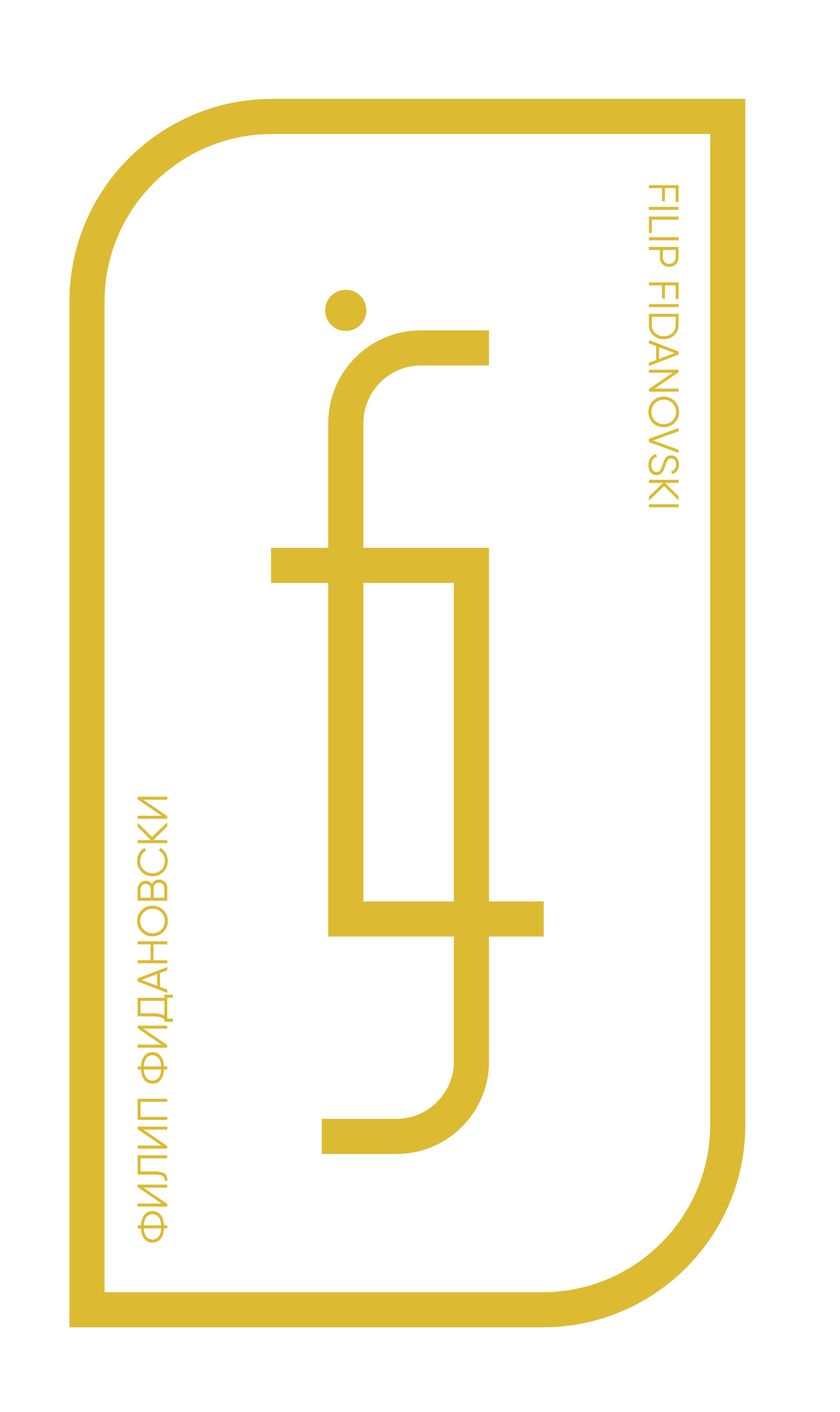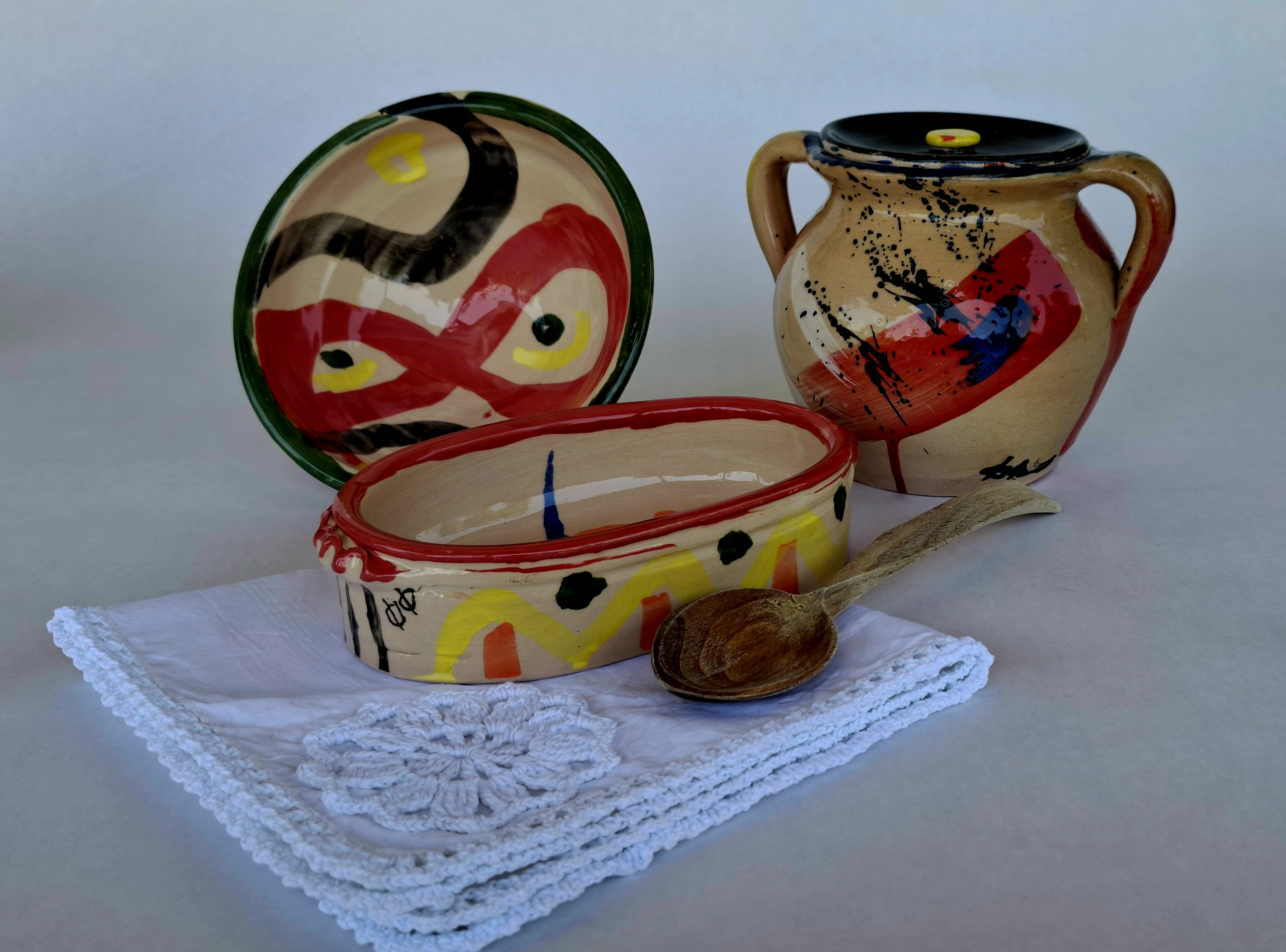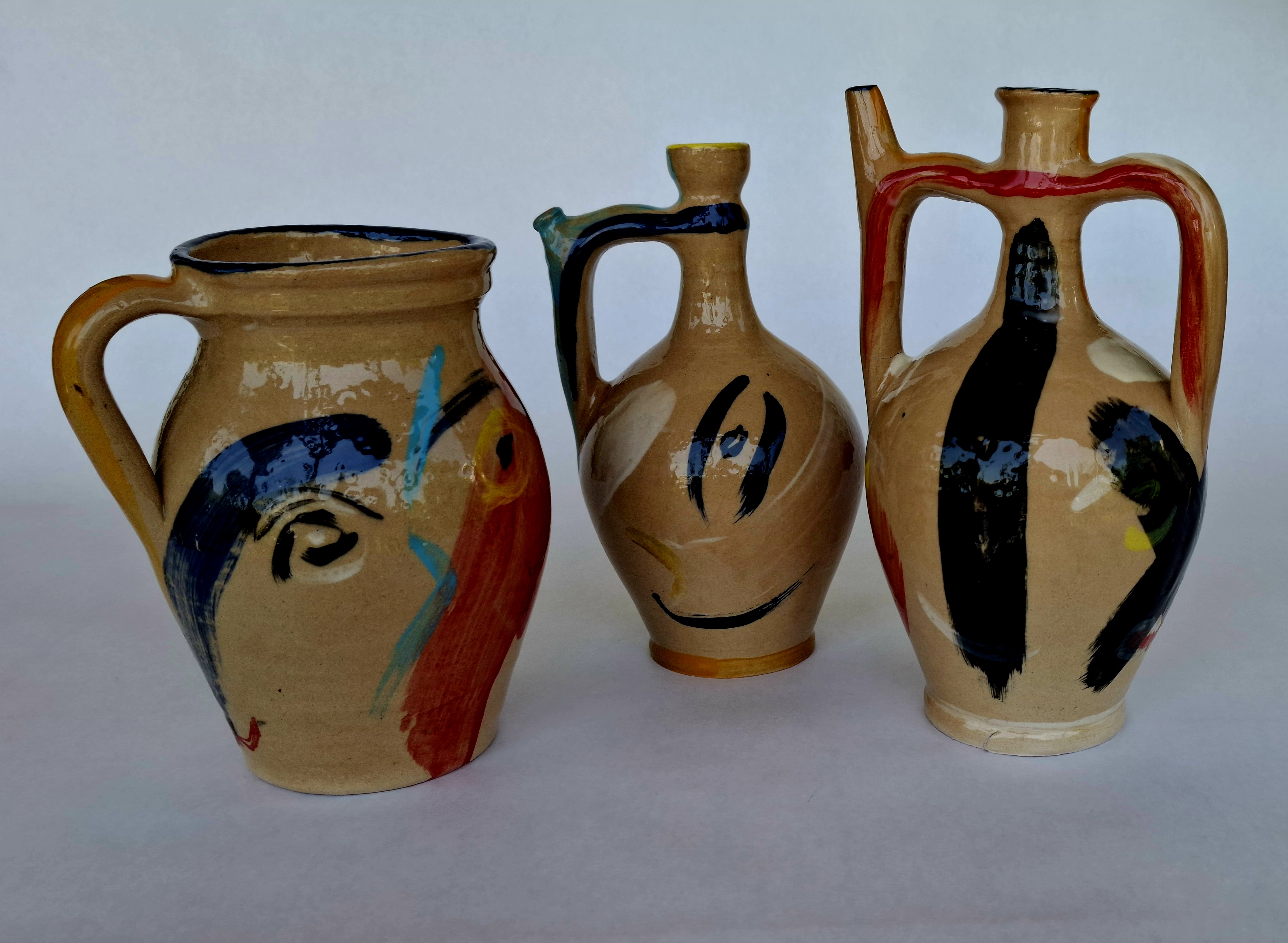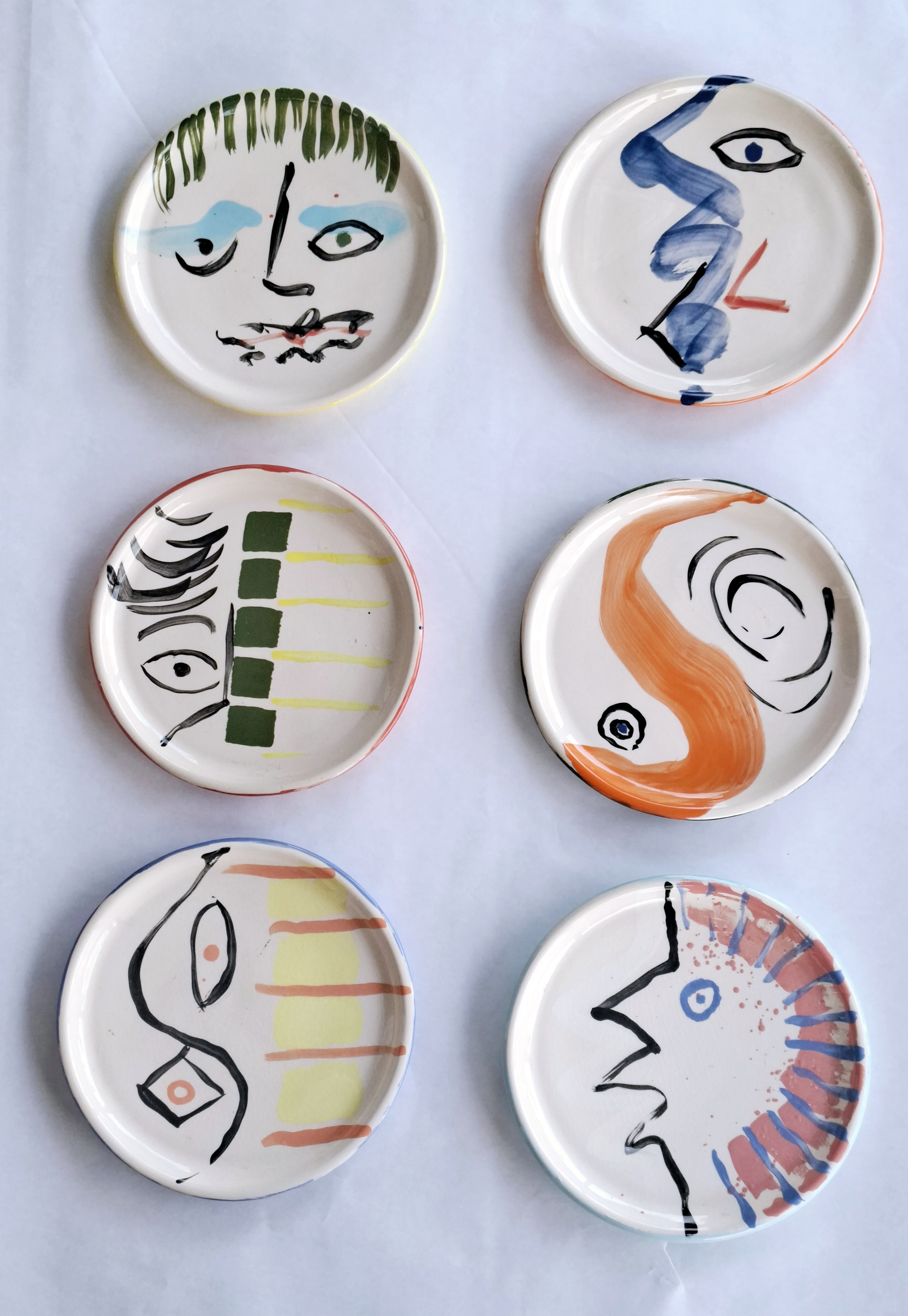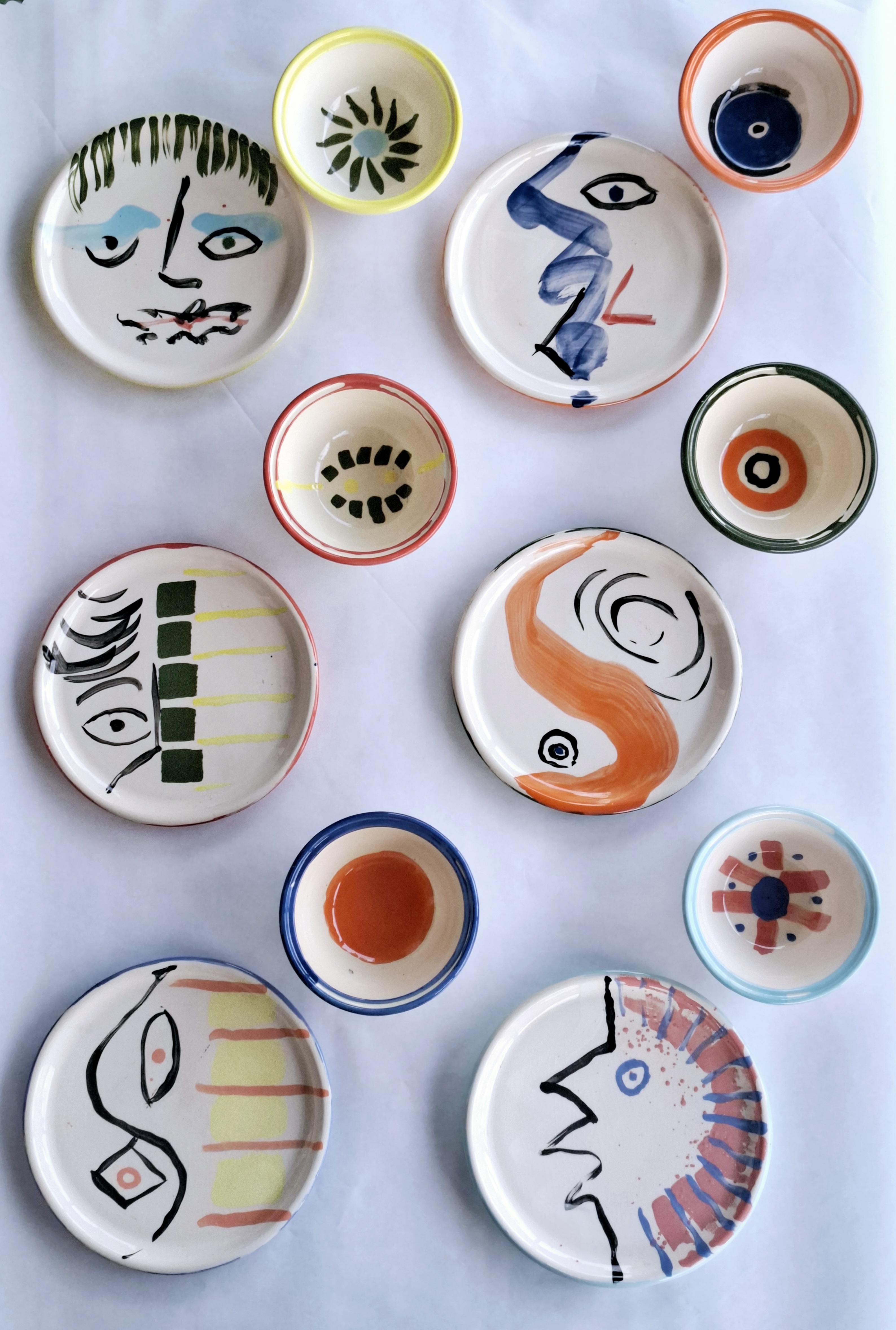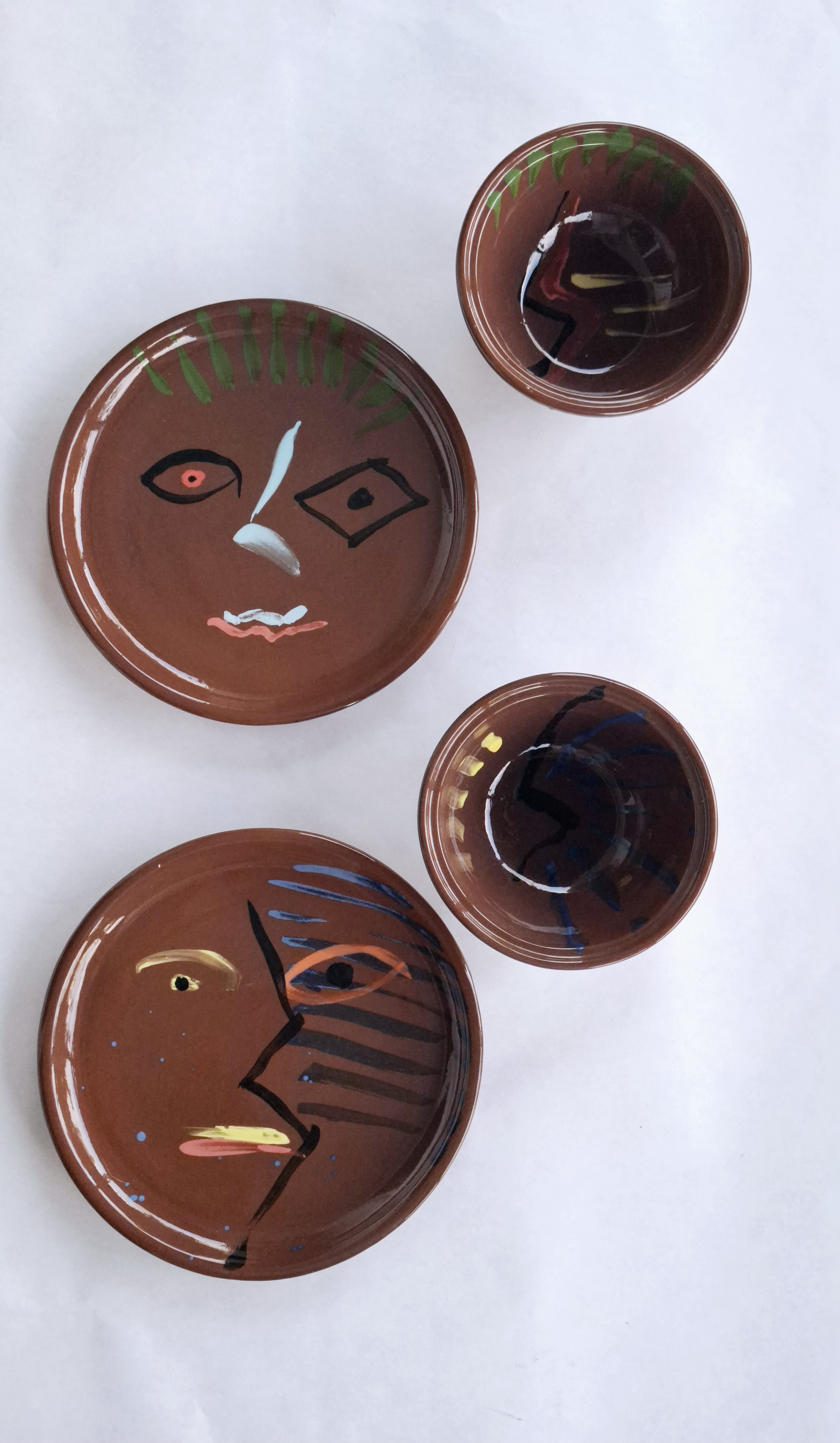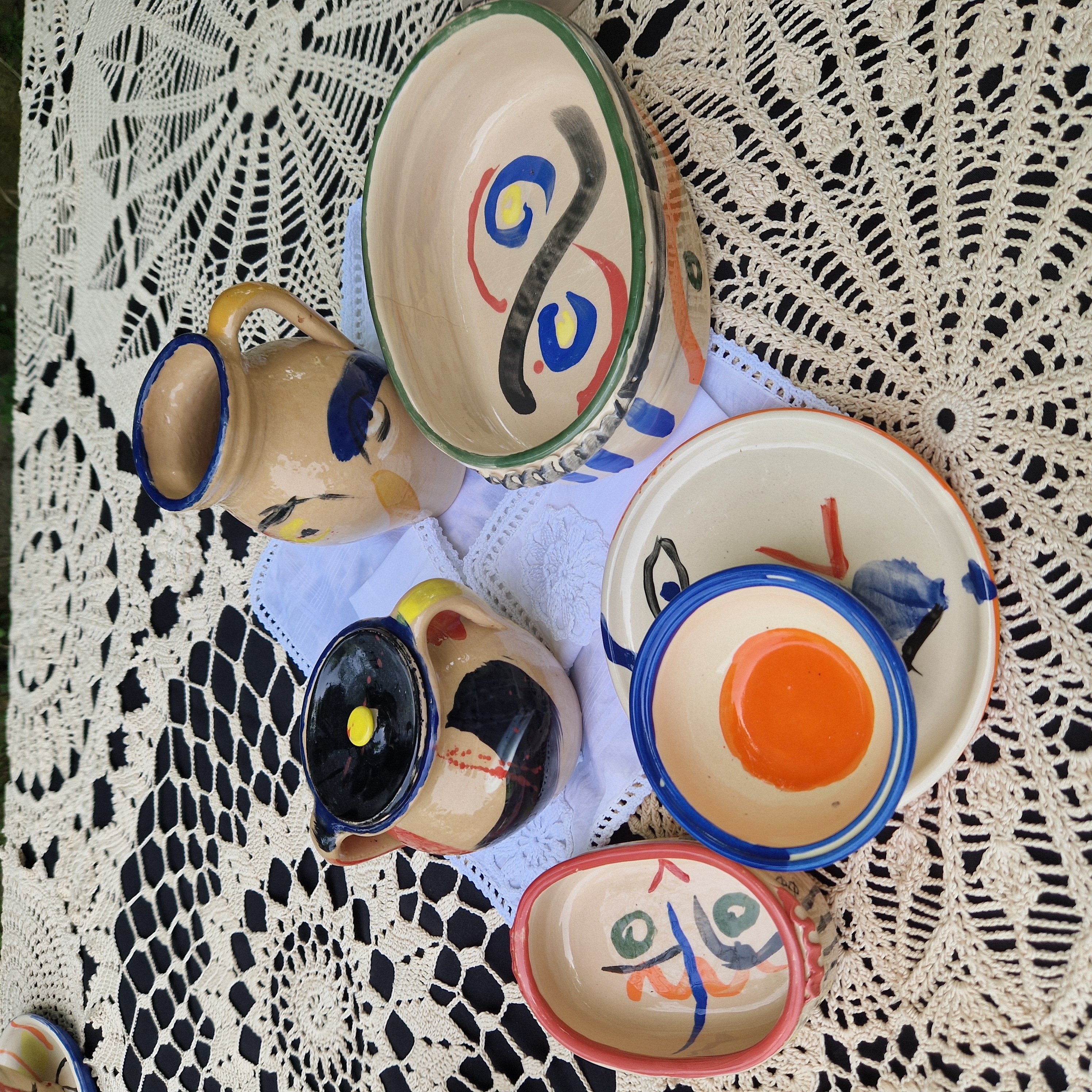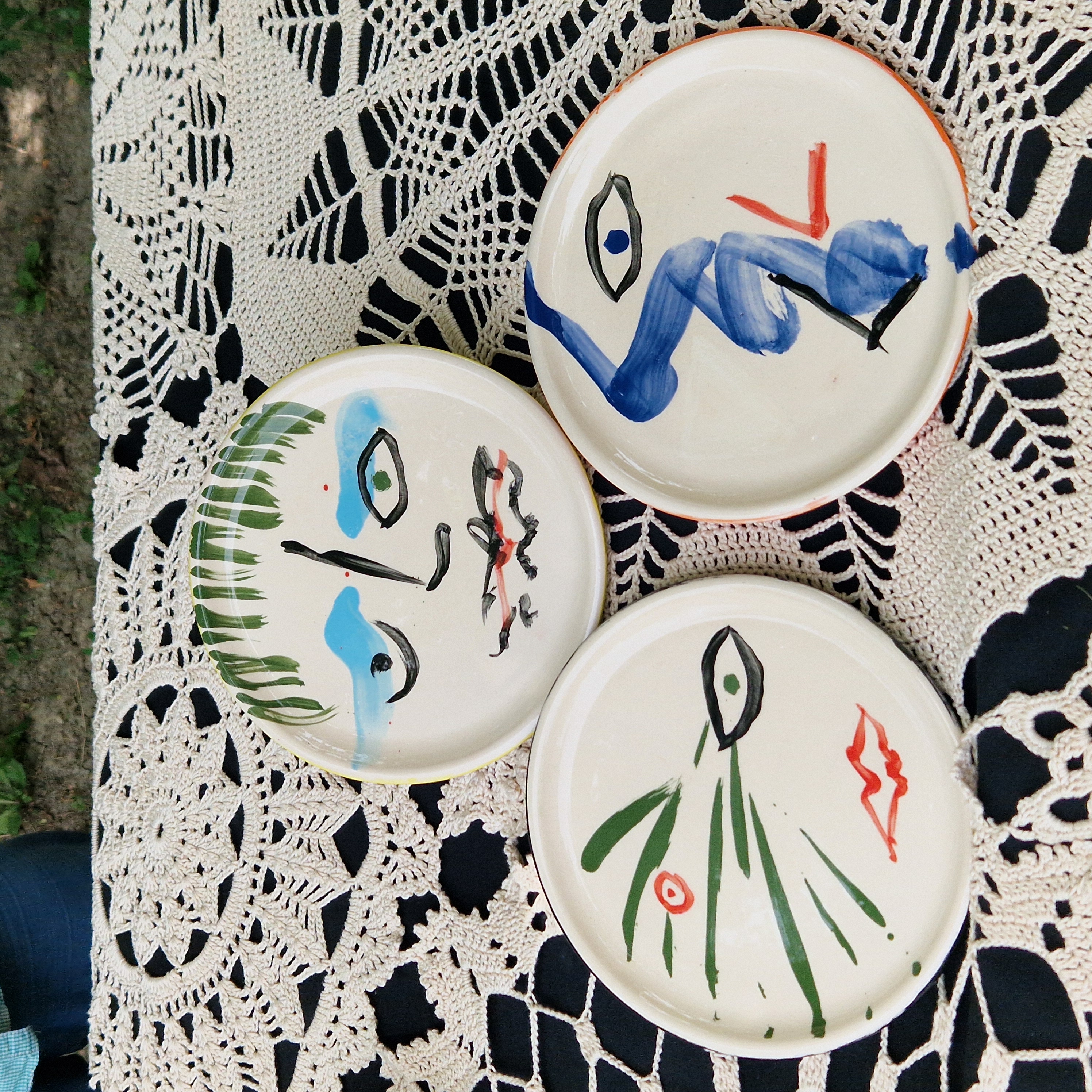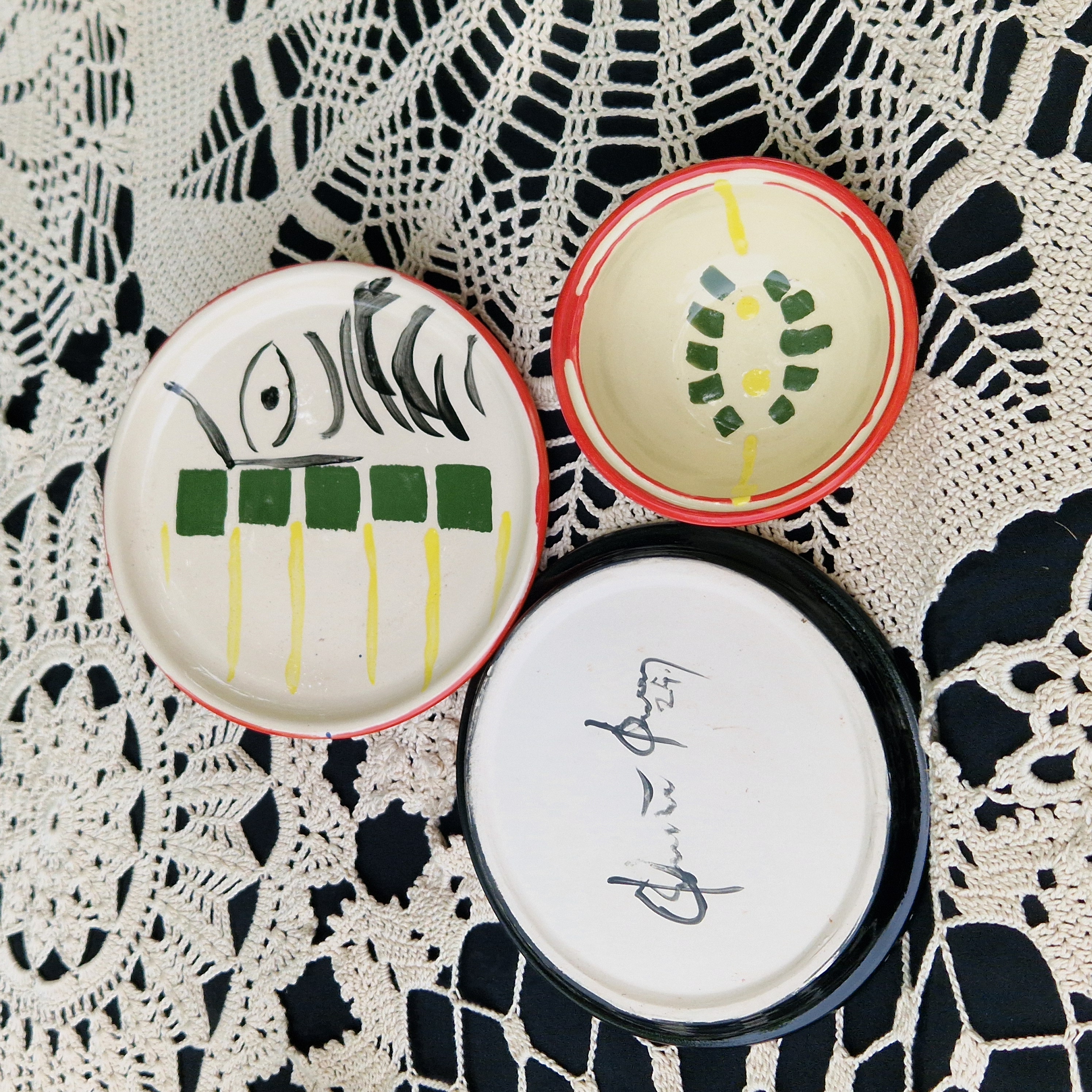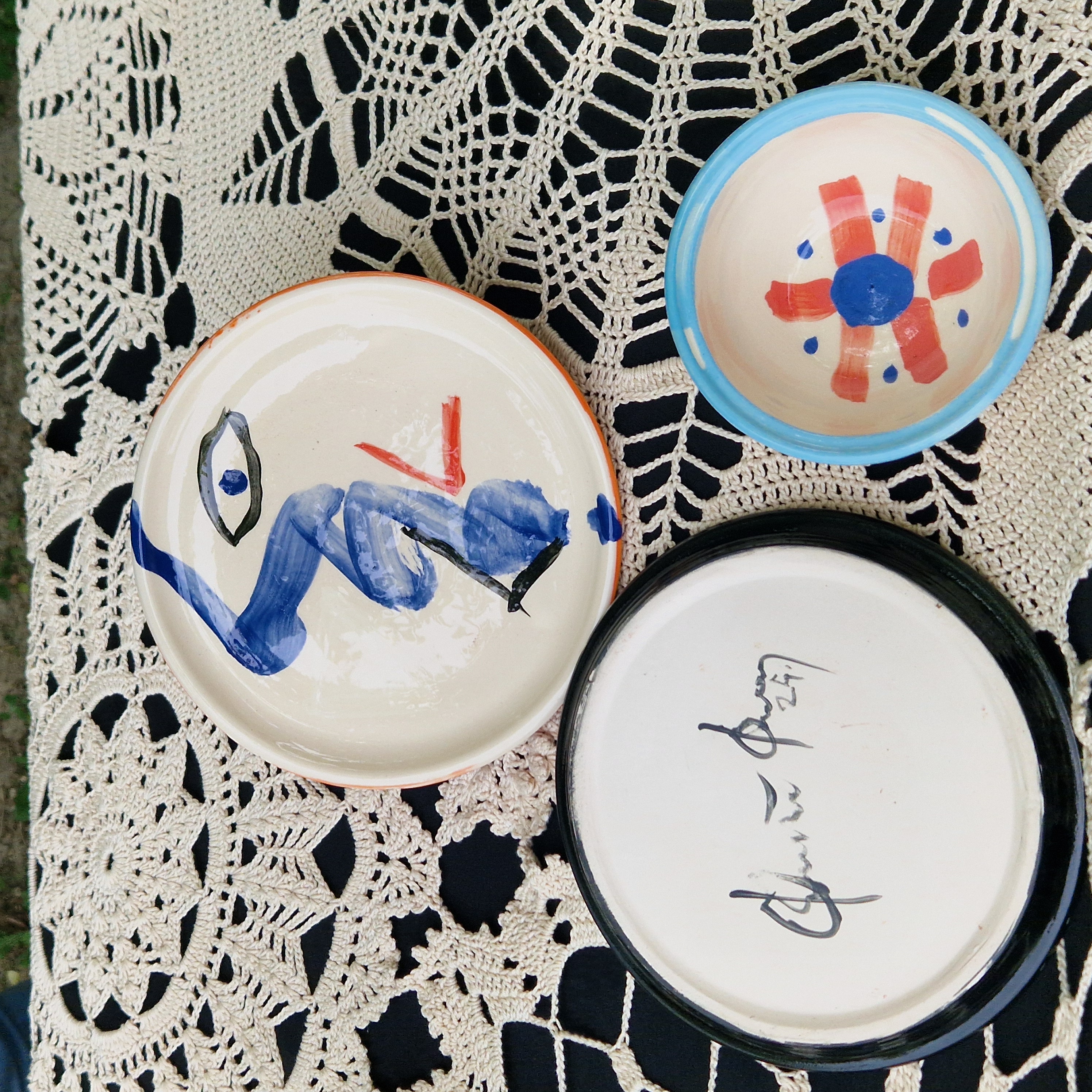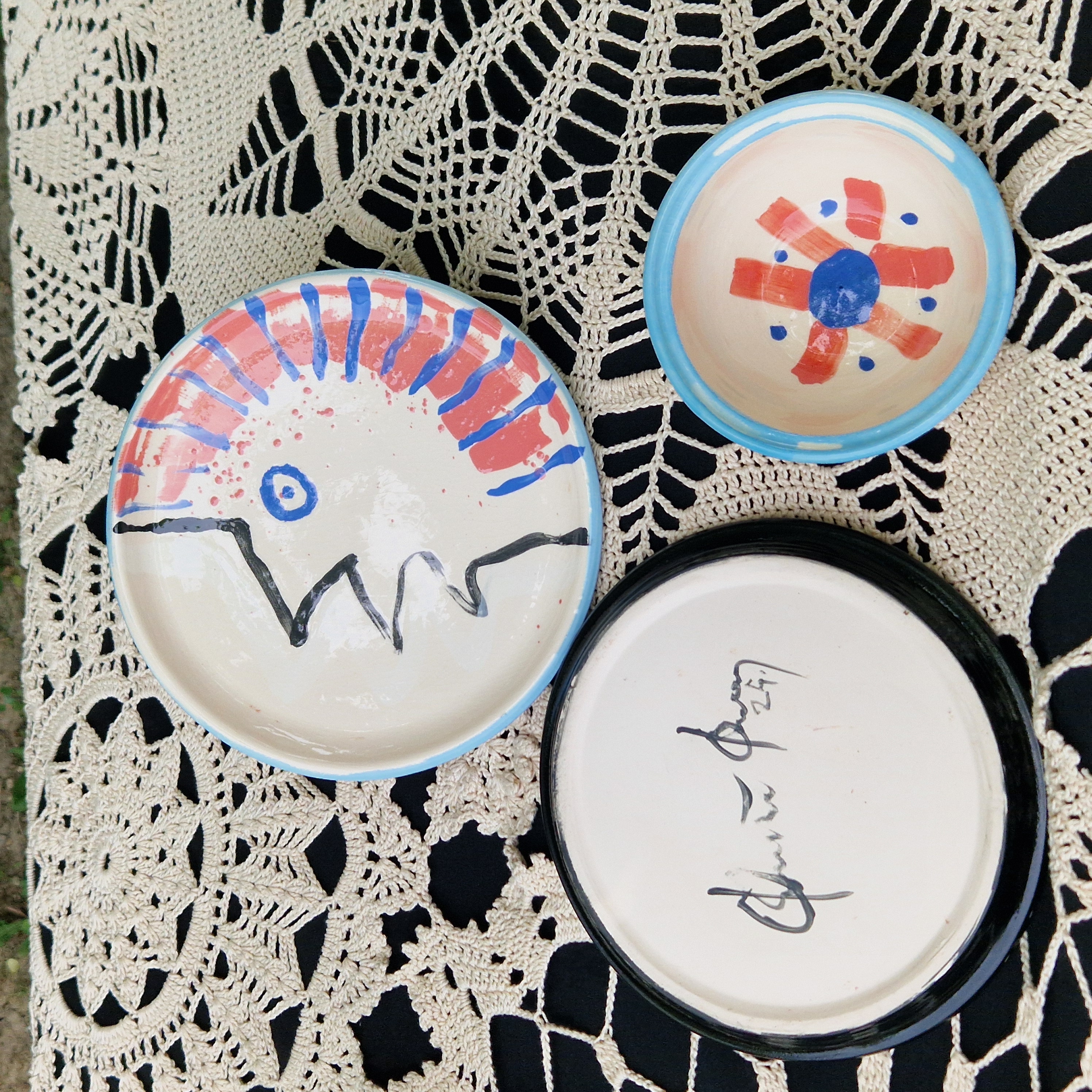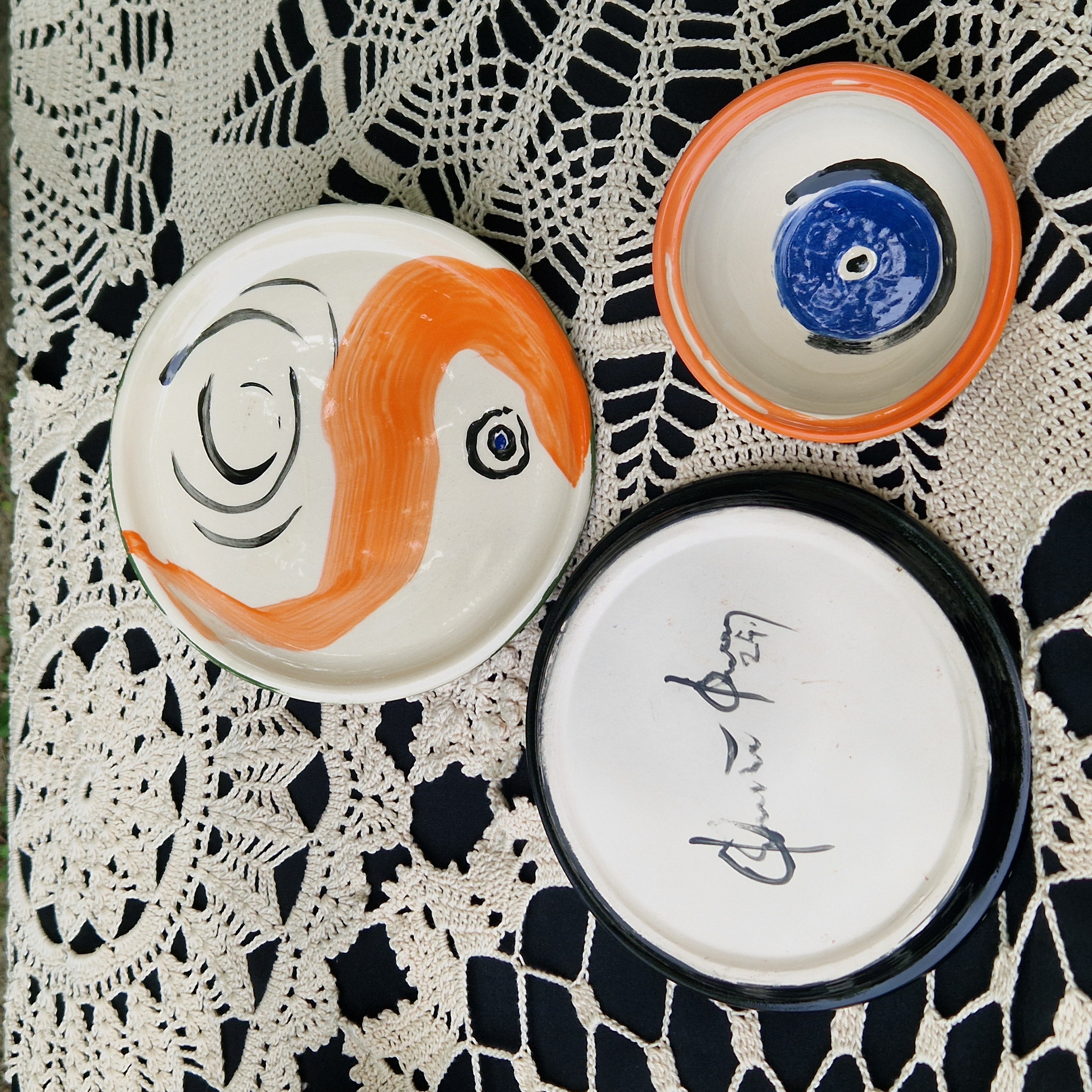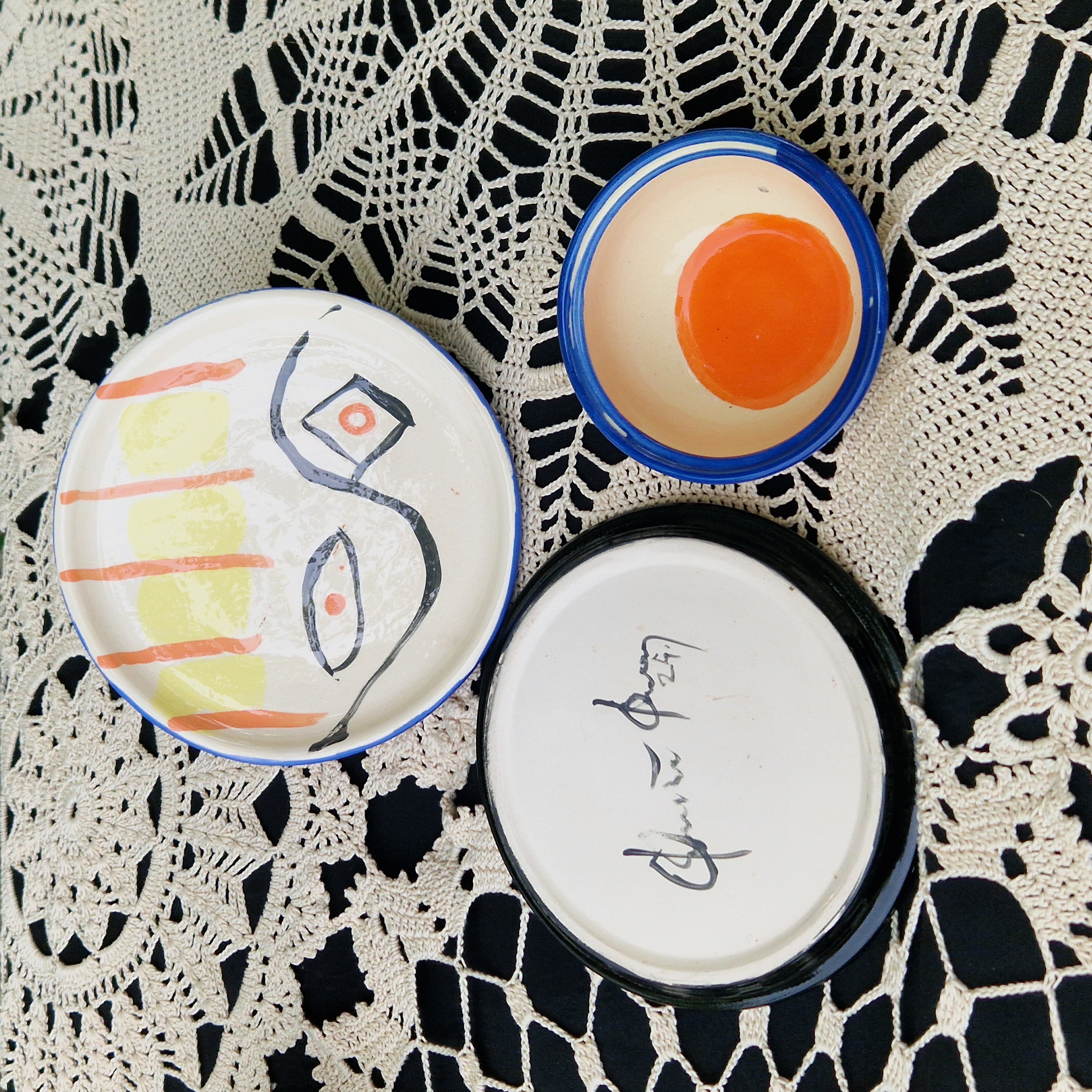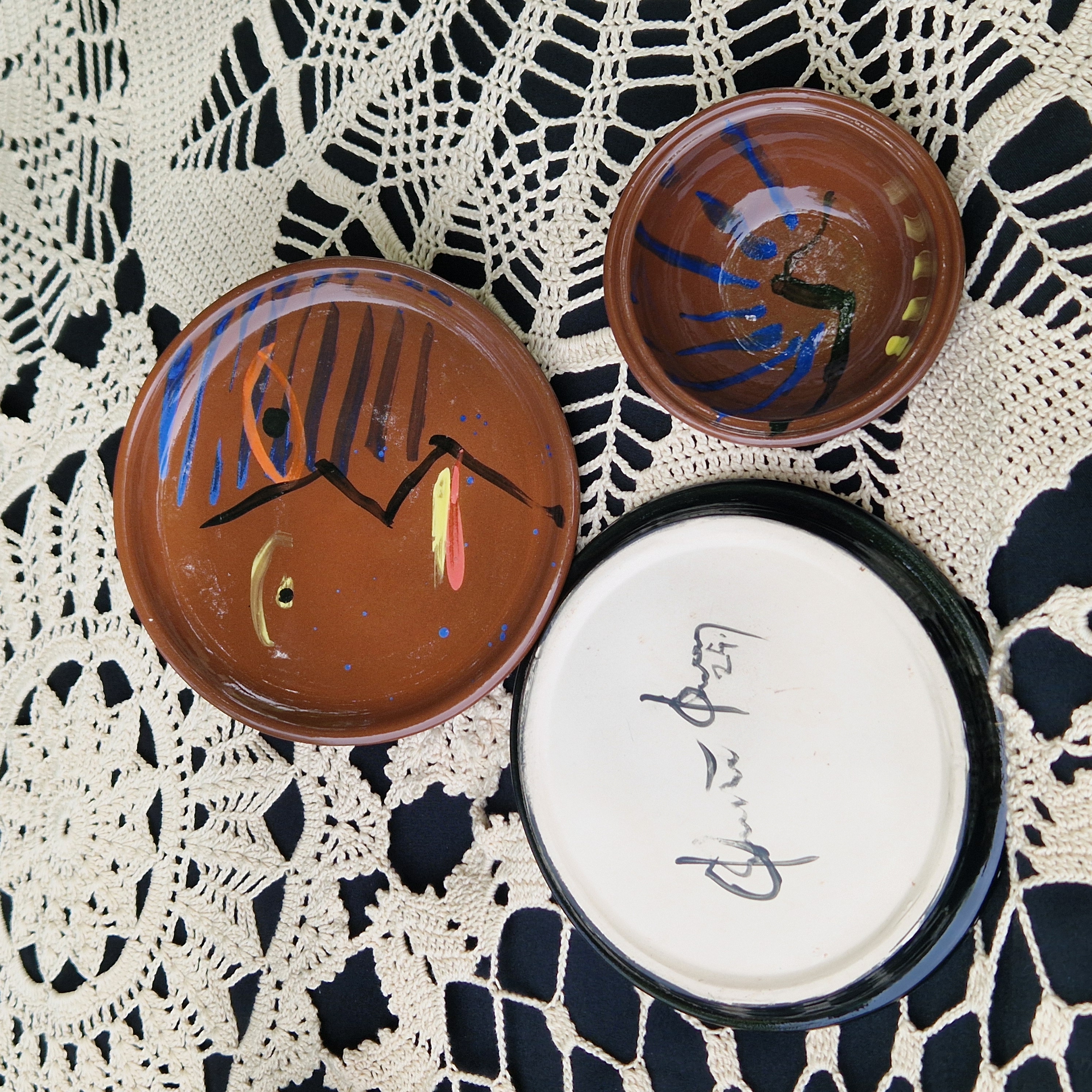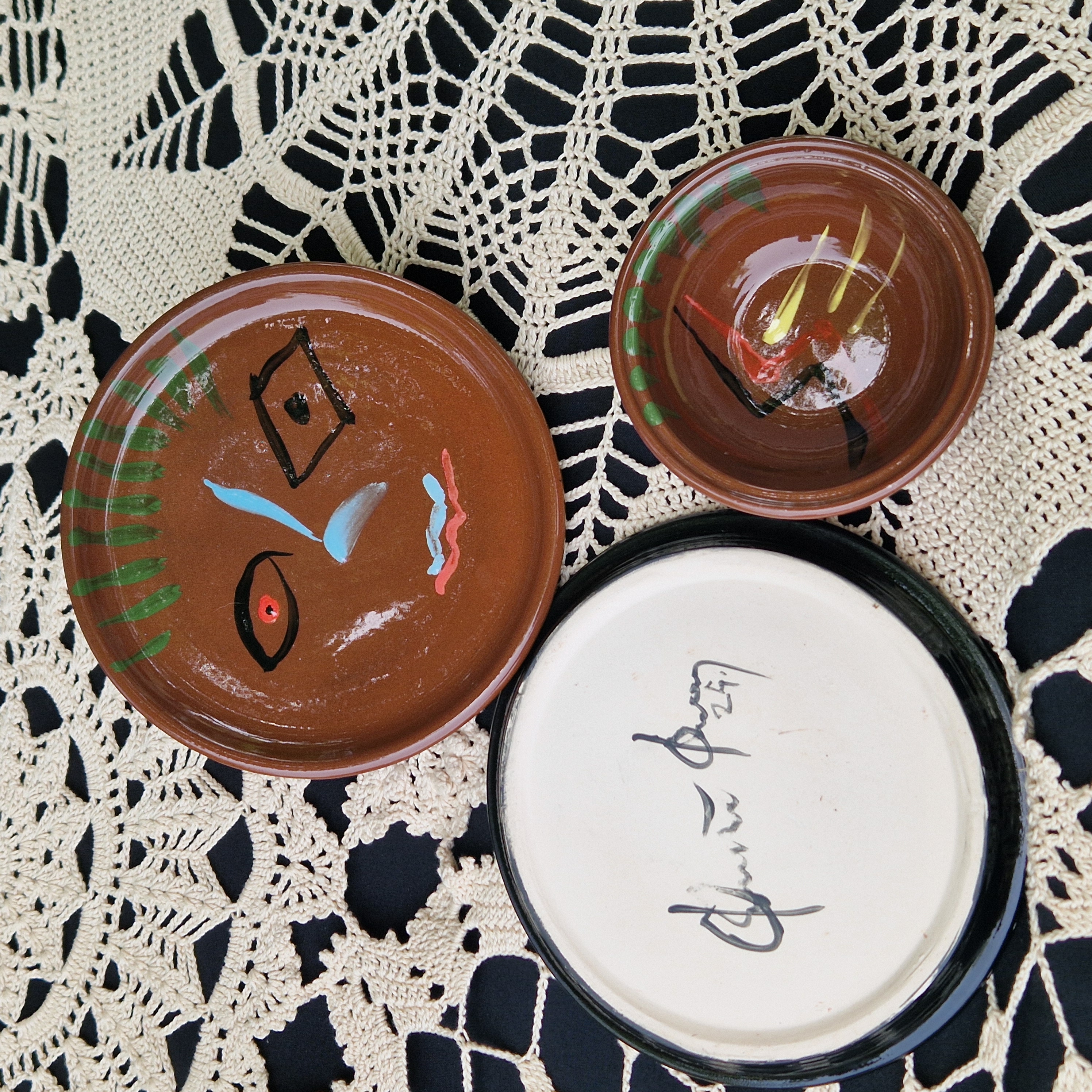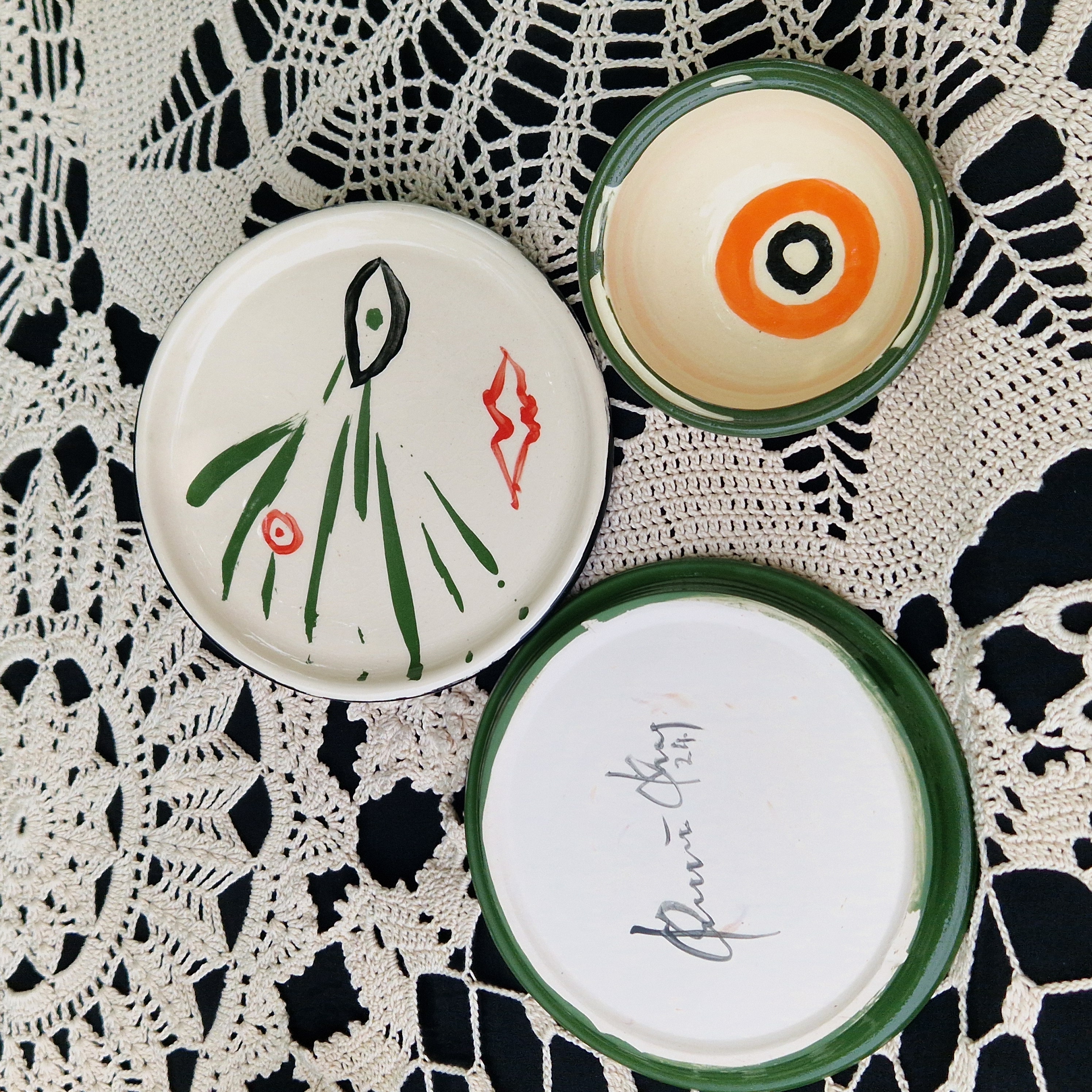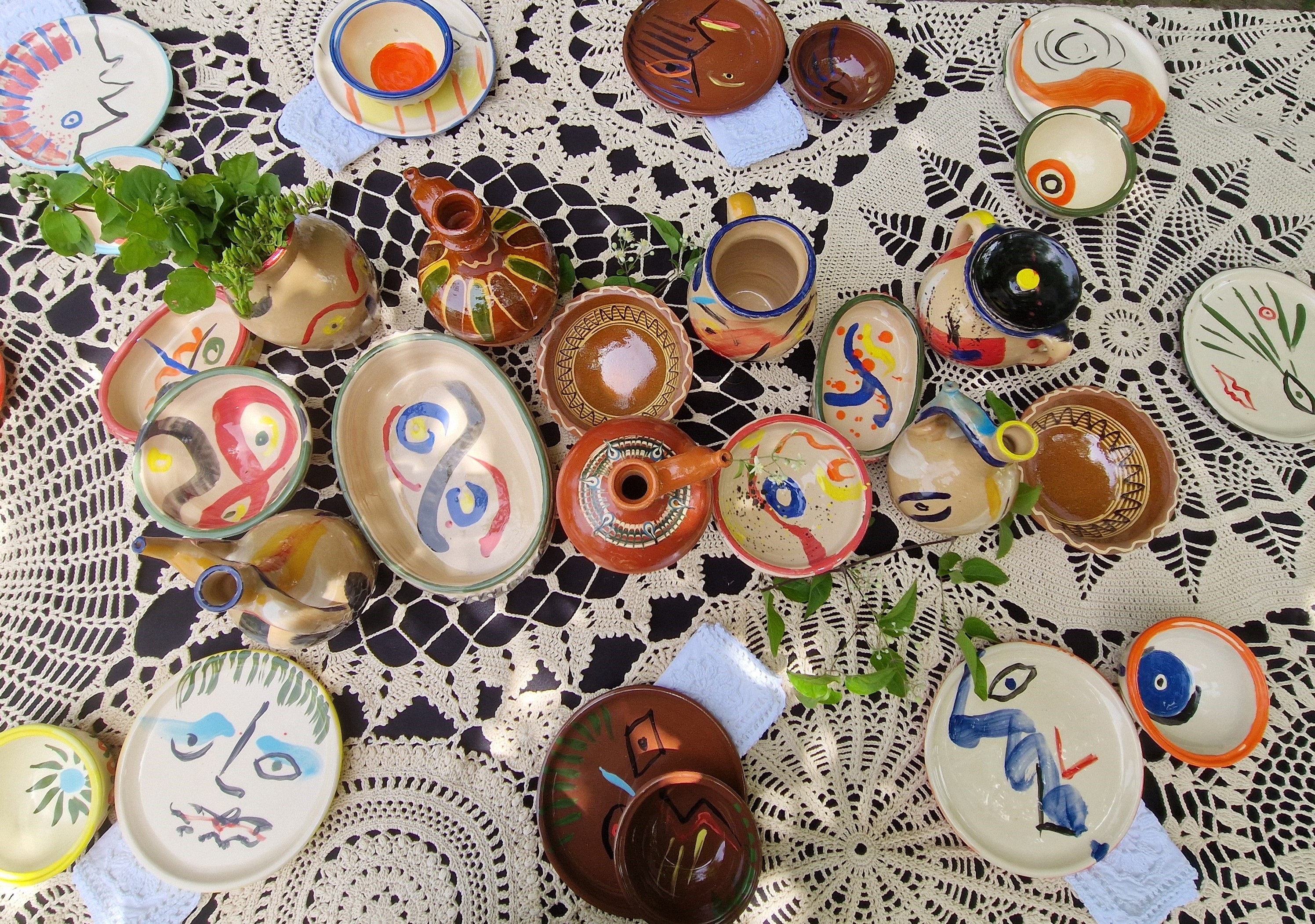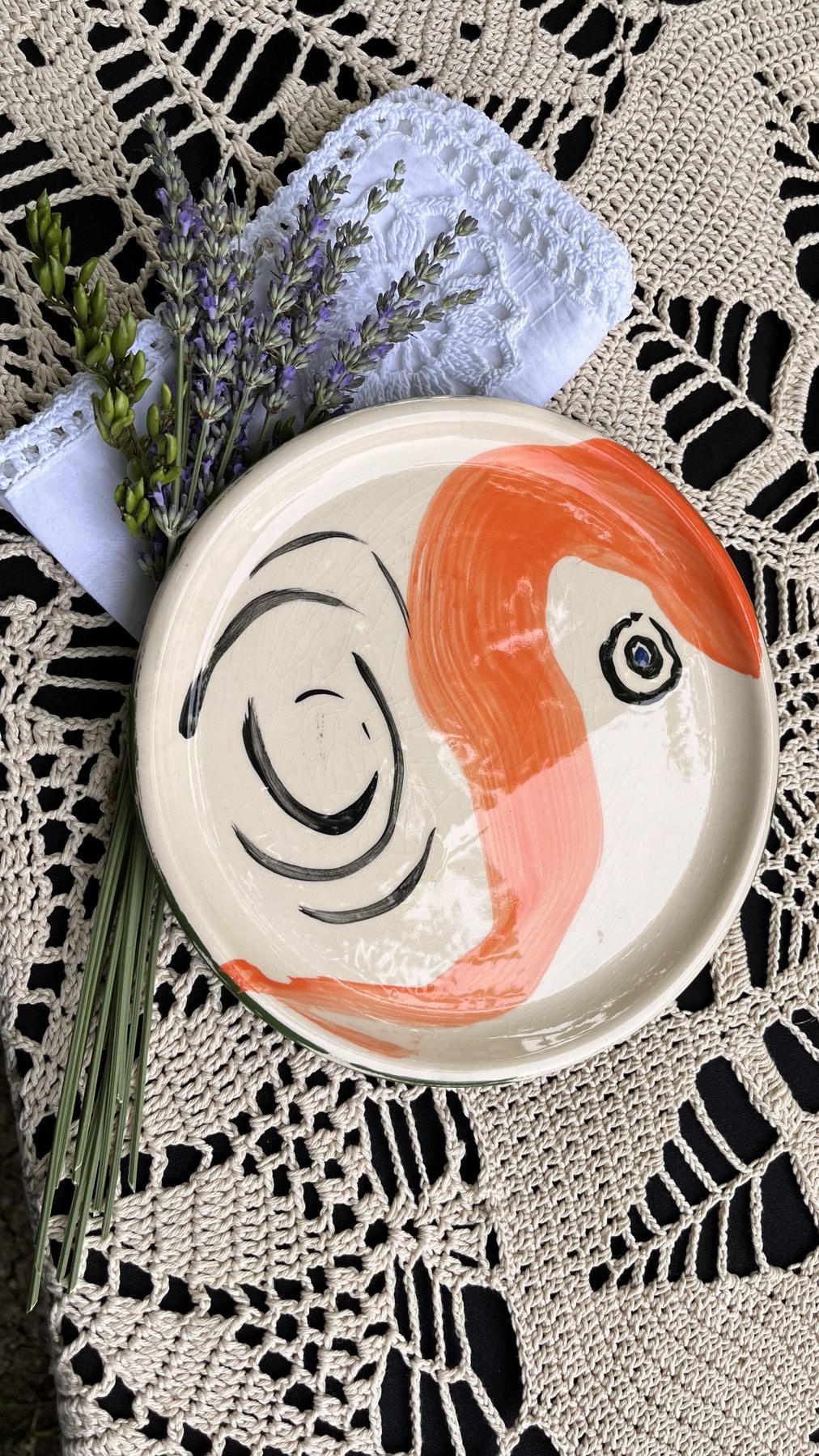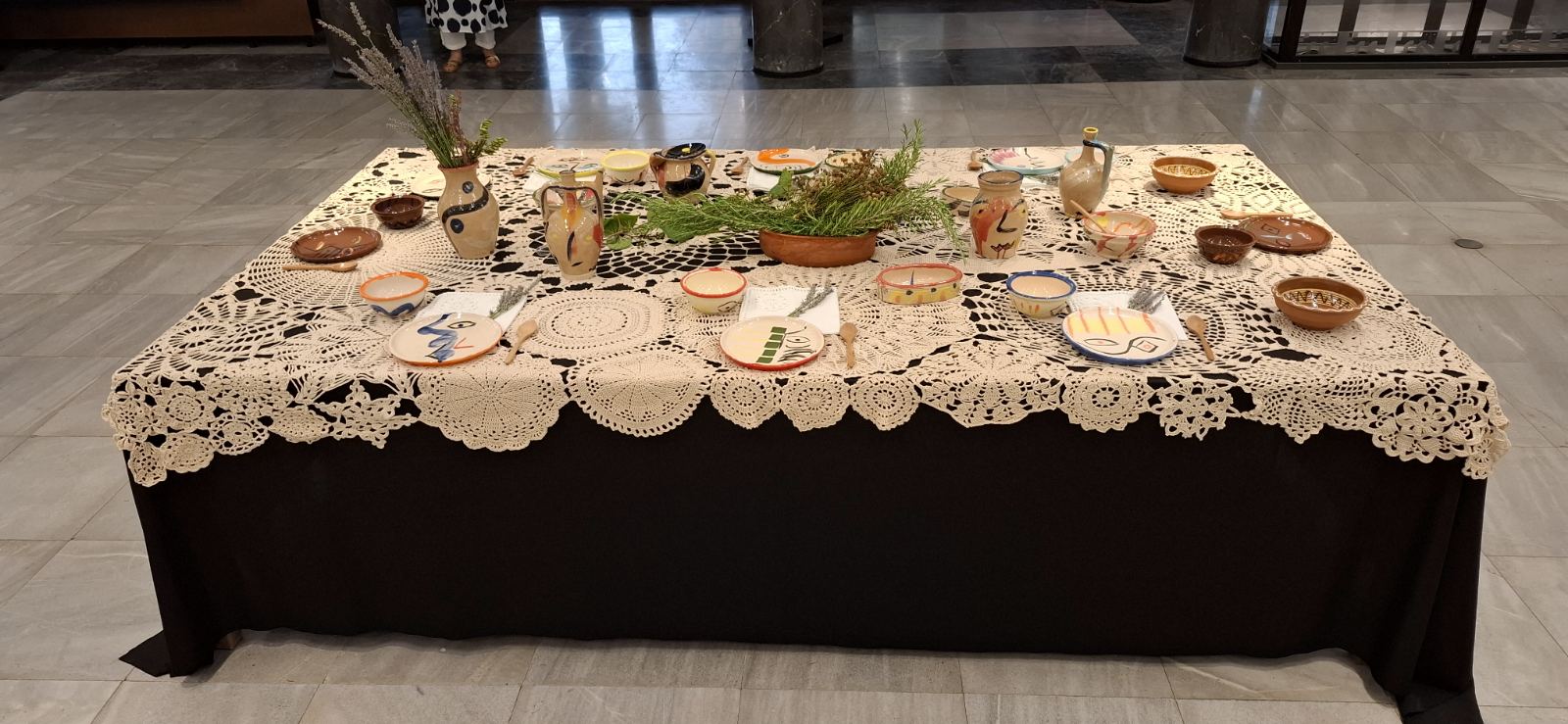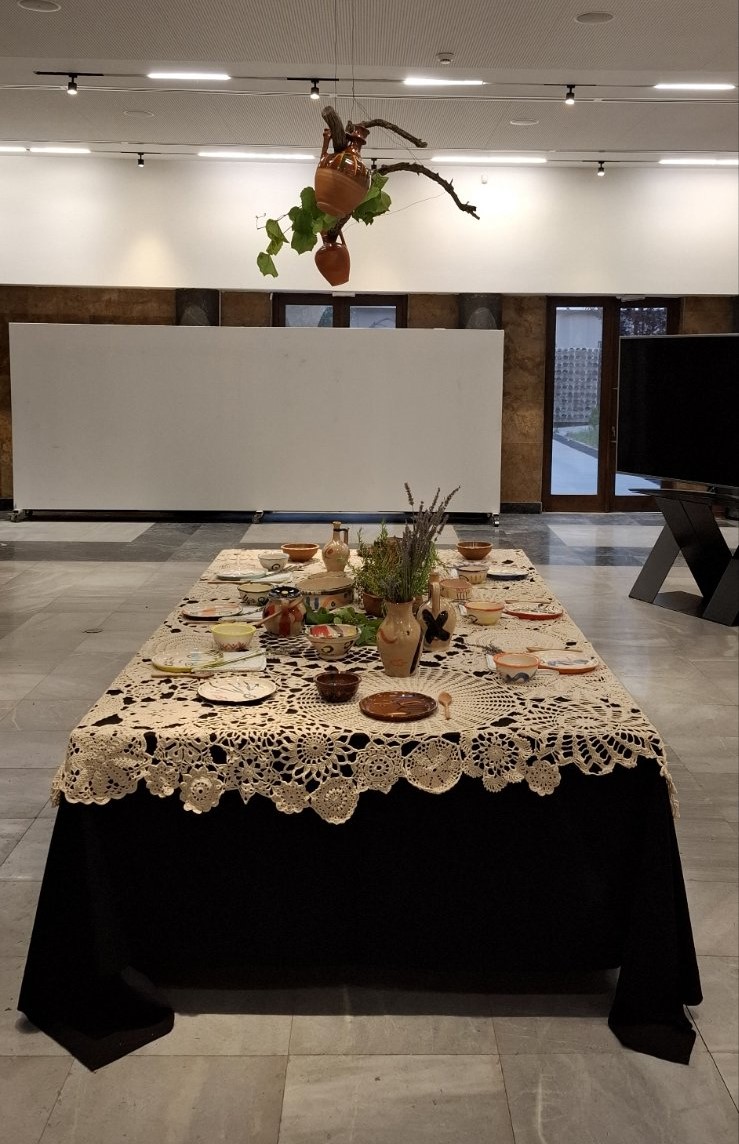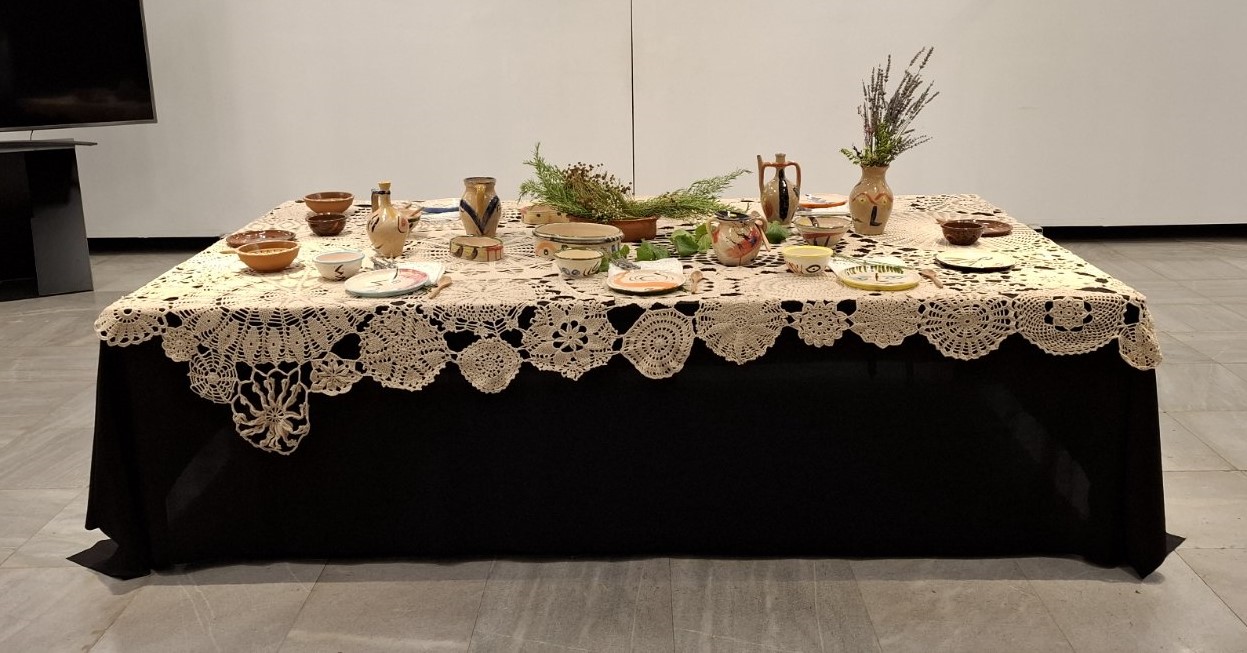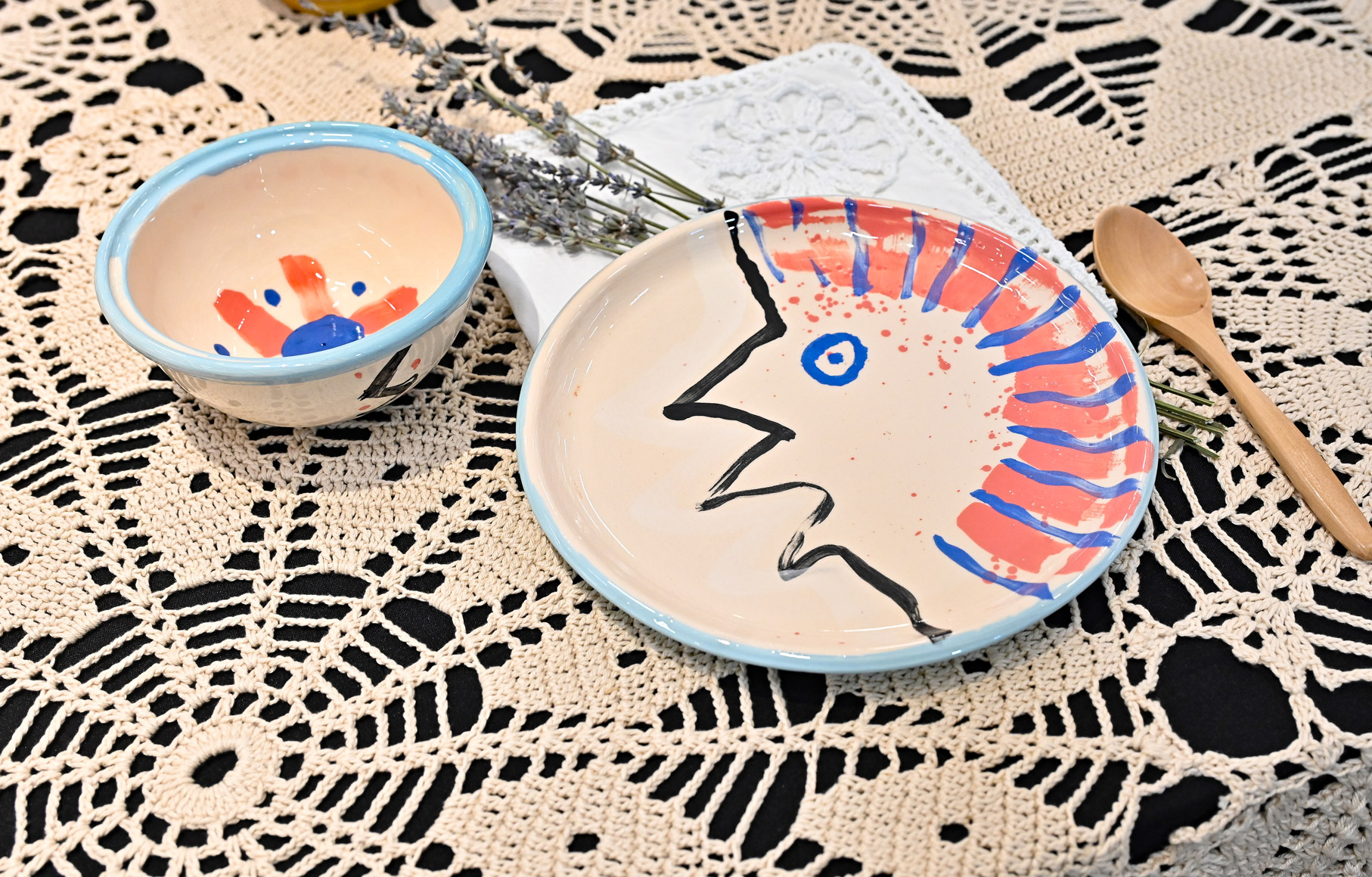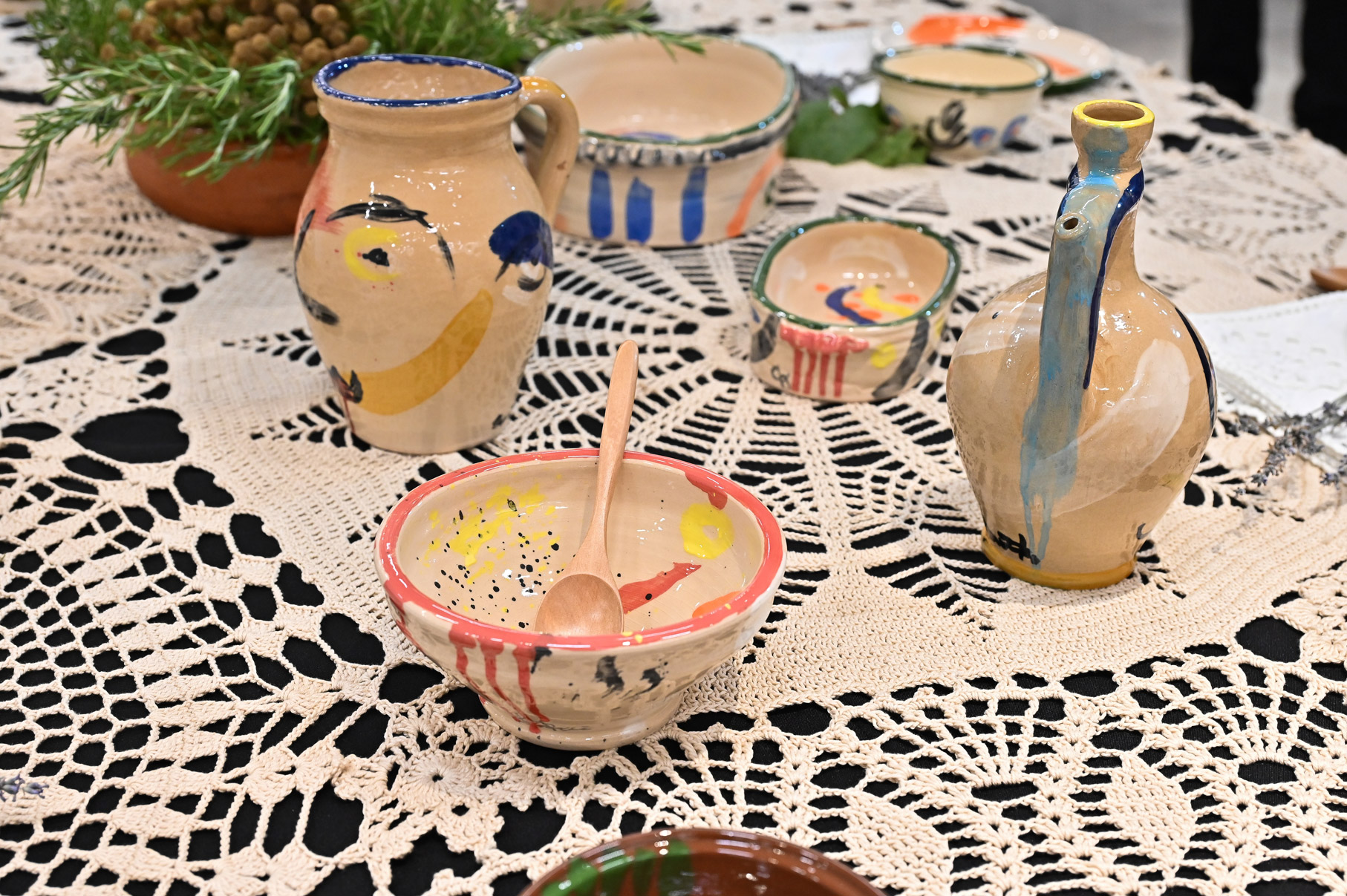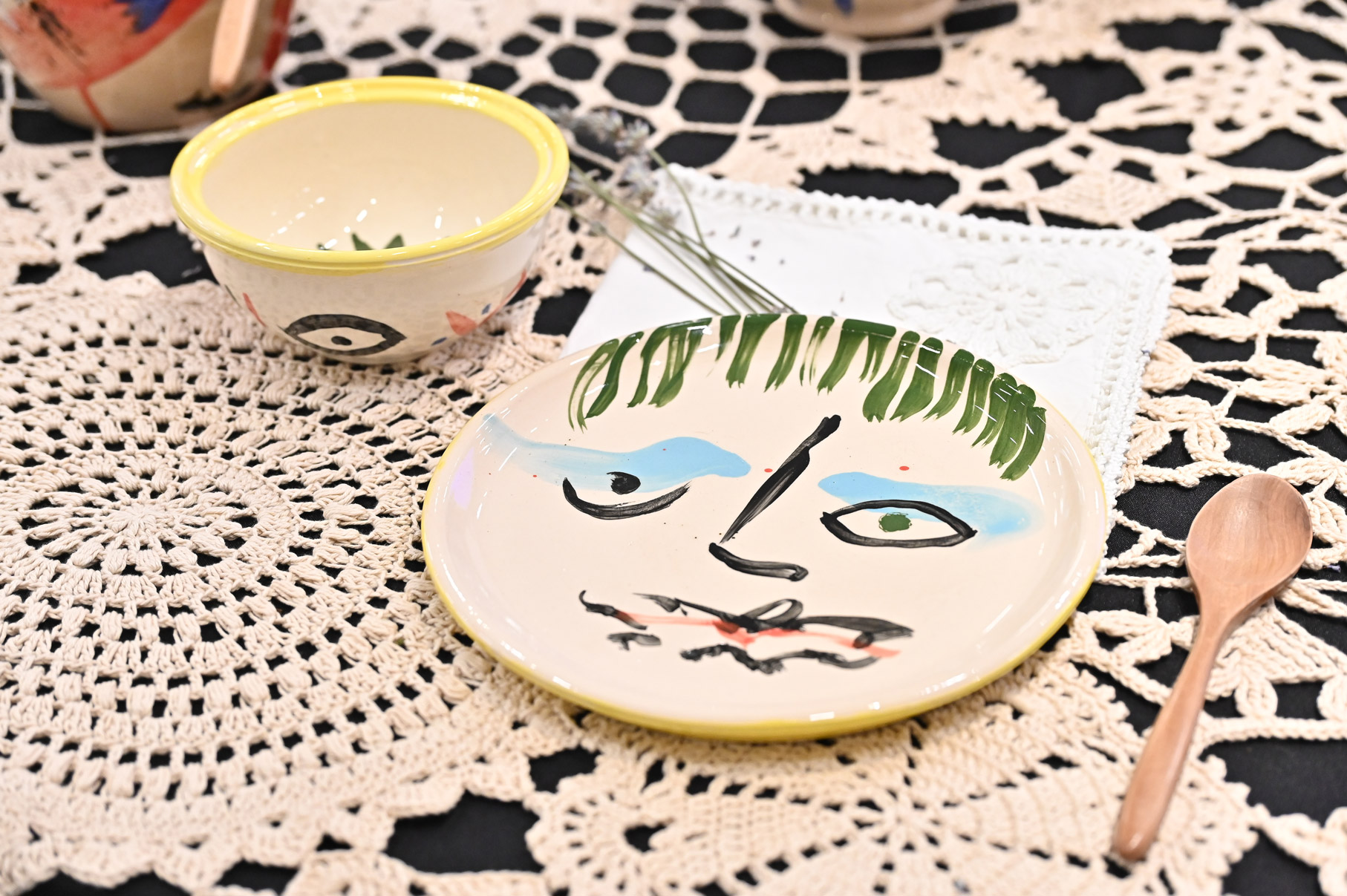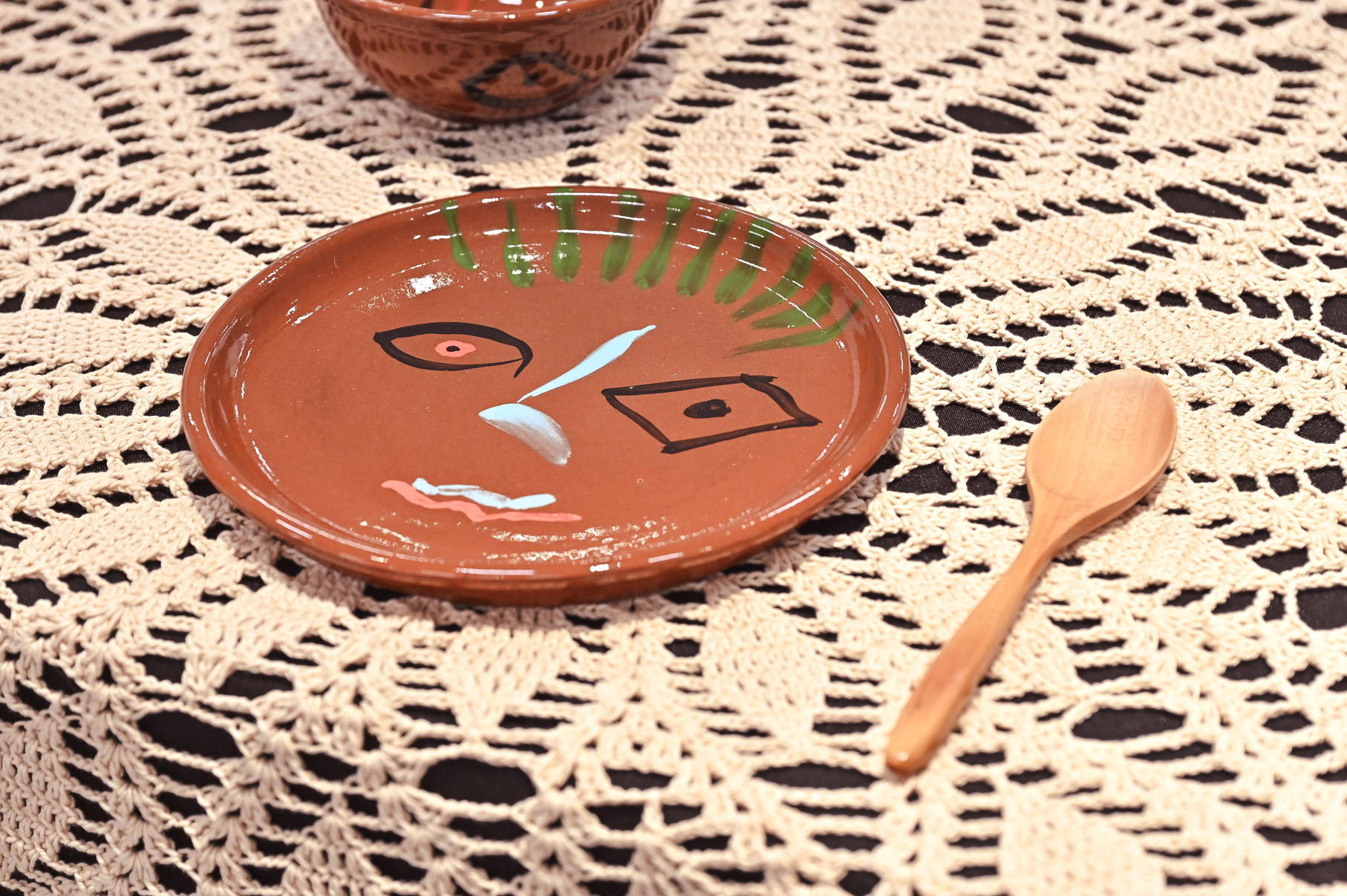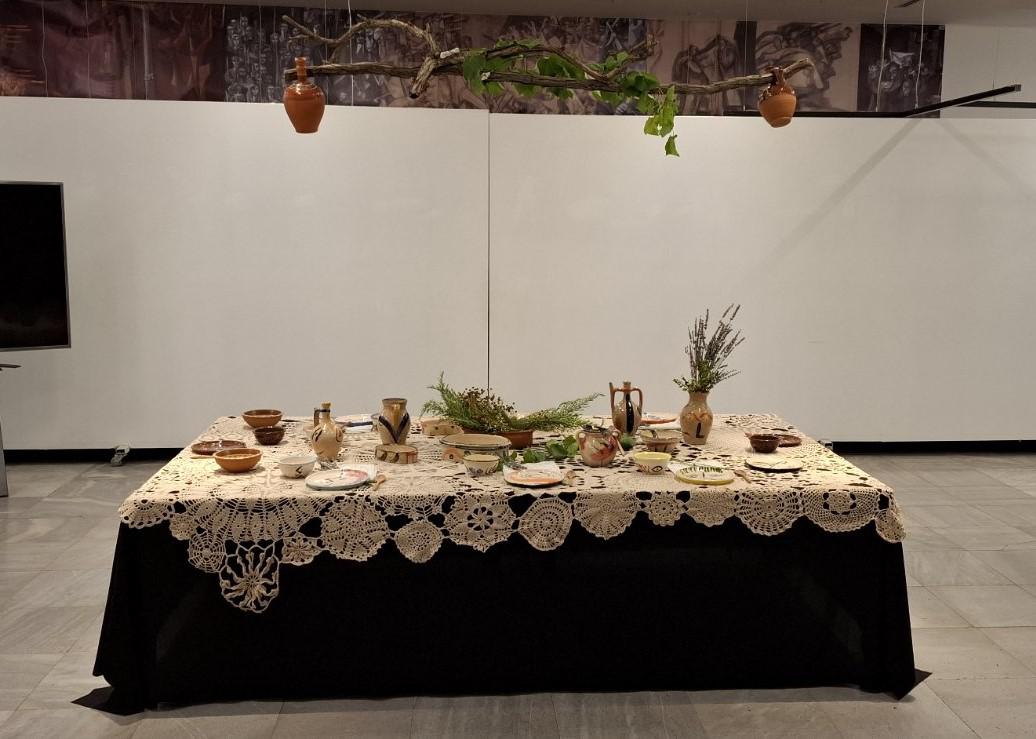
It is no coincidence that Filip Fidanovski titles the edition of artistic ceramics "Modern tradition", since in this artistic journey the basic idea is extracted from the cultural baggage that the artist has absorbed throughout his long-term research into the genesis of the forms, colors, decorations and craft techniques of the Macedonian ceramic tradition. From the rich range of prints contained in this memory capsule, Fidanovski, with the skill of a skilled alchemist, has brought forth from the historical darkness and "barbutina" the decorations from the imprinted fingers on the Neolithic ceramics of the Govrlev vessels and the refined structure of the clay of the "terra sigillata" Scup vessels; and grass, the green sweep of the brush that the medieval potters drew on the vessels perhaps prepared for the table of the rulers of Skopje's Kale; and the shapes from the water pots and tubs, which the artisans from the Skopje bazaar sold on market days on the ice in the suburb of the fortress in Skopje; and the characteristic "flattened" small clay pan in which the widely known "bean pan" was prepared in the bazaar ashchilinki; as well as the huge palette of colors, wavy and floral decorations, applied on the lids of the huge clay pans, to serve as a "mark" and not to mix up the "turley pans" that diligent housewives took to the neighboring bakery. At the same time, Fidanovski transforms all these coloristic and decorative patterns into his own artistic language, keeping the linear modeling in the artistic print with which he draws the imagined creation. The use of forms that are extracted from the "memory matrix" of the Macedonian traditional repertoire of ceramic utilitarian vessels, gives the artist the opportunity to express his respect for his own cultural heritage, at the same time building it up, while telling his own imagined narrative, with a contemporary drawing expression and a suitable color palette, forming an overall outstanding art experiment "modern tradition". This authorial approach of Fidanovski is a kind of "a lighthouse" with which he insists on directing the attention of the domestic public to the urgent necessity of preserving and continuing the skills of the traditional pottery craft, which is faced with permanent disappearance, while very skilfully showing the possibilities and models for its revitalization by incorporating the individual artistic stamp of each creator as an added value.
The concept of using traditional handicrafts of different kinds, as a visual substrate in the creations of modern artistic expressions, is also represented in Kostojchinoska's idea, which ideally builds on Fidanovski's creation, creating a perfect harmonious composition, which at the same time implies the idea to be "a role model" in a modern home, because it breathes the breath of "home" and calls for modern gastronomic-artistic experiments with "grandmother's" ingredients.
Respecting the age-old bequest from our ancestors for benevolence and hospitality at the table with a bowl of salt and bread given to each food item; respecting the habit of all happy and sad gatherings in families starting and ending around that same table, accentuating exactly those essential elements - the table, the clay pot and the scattered "sushikla for guests or for holidays", Fidanovski and Kostojcinoska use them as a fluid for their shared artistic "tango", which is both infinitely elegant yet rustically rough, with embedded passionate devotion and love in the game of the brush and the knot of the thread, while telling their vision of historical truth with a handful of extremely valuable artists.
Through such a virtuoso blend between tradition and modernity, both artists present us with real artistic delights, with which we can be proud of our own identity print, and we can stand dignified "side by side" with all the world's modern creations, while introducing " at home" everyday items that will provide us with the luxury of double enjoyment - gastronomic and artistic, wrapped in the warmth and smells of grandma's kitchen, with modern spices of aesthetics.
Jasminka Namicheva
